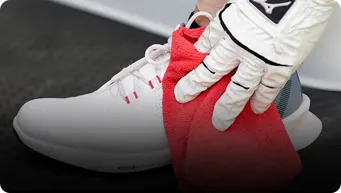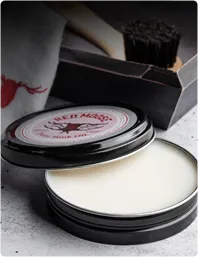How to Care for Different Types of Leathers on Your Shoes
At Red Moose, we have you covered when it comes to shoe care products, but that process for maintaining your shoes depends on which kind of leather you’re rocking.
In fact, before you start polishing or maintaining your shoes, you need to first identify the material, because what can create the perfect shine on one material can damage another.
Red Moose has an overview of different leathers and some basic care guidelines on each.
Smooth Leathers
- Smooth Calfskin – This is the most common leather you’ll find on dress shoes. You can identify it by its smooth appearance. Because of its smooth look, you’ll want to prevent any drying and cracking by treating with high quality, natural products. Doing so can keep a pair of calfskin shoes in great condition for a very long time.
- Pebble Grain/Hatch Grain – These are smooth leathers that are embossed to give the final product some texture or pattern on the shoe’s surface. Because of the grooves, you’ll want to use a lighter amount of polish so the wax doesn’t build up in those grooves.
- Nappa Leather – Nappa leather comes from a goat, and is too delicate to wax. It is generally used in women’s shoes.
Suede Shoe Care
Suede comes from the reverse side of the smooth calfskin hide. Its durability makes it perfect for more casual shoes or boots. The best way to care for suede shoes is to use a suede brush. Regular brushing keeps the nape looking good and removes any dirt on the shoe.
Nubuck Shoe Care
Nubuck has some similarities to suede but has a much finer texture and is more delicate. Brushing is also the way to go with nubuck, but using a suede brush will damage the surface, so you’ll want to use a crepe brush for nubuck.
Patent Leather Shoe Care
Patent leather is marked by its shininess and is generally used in formal evening wear. A varnish or lacquer is applied to give these shoes its hard, shiny look. You can clean patent leather shoes simply with a wet rag and then use our liquid shoe polish or wax.



 Free Shipping over $60
Free Shipping over $60
 Easy Returns
Easy Returns














































Leave a Reply